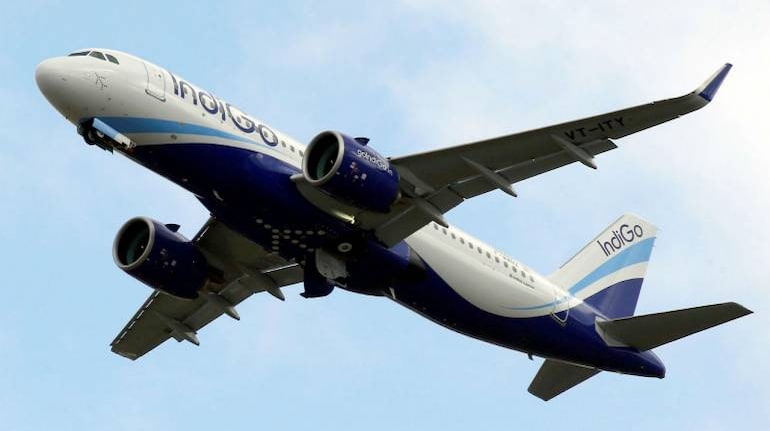



Since the time Air India announced the consolidation of its group airlines and Singapore Airlines decided to go ahead with the merger of Vistara with Air India, there have been continuous concerns around Indian aviation sliding into the hands of two players, which could lead to an increase in fares and lack of choice for consumers.
Even before that debate could go towards its logical conclusion, Go FIRST went down, blaming engine manufacturer Pratt & Whitney for its grounding. With SpiceJet having shrunk dramatically and Akasa Air not scaling up fast enough, over 85 percent of the market appears to be controlled by IndiGo and airlines of the Air India group.
The reality is rather different. Indeed, a flight schedule provided by OAG Aviation, exclusively for this article, paints a very different picture. In July, there are 1,048 routes operational in India (Mumbai-Delhi is considered one route, and Delhi-Mumbai is a separate route). A staggering 830 of those routes are operated by IndiGo. Alliance Air, the only government owned airline, comes in next with 158 routes. This is followed by Air India with 153 routes, and SpiceJet with 119. Vistara, which recently carried its 50 millionth passenger, and is slated to merge with Air India next year, operates 100 routes as per data provided by OAG.
A monopoly it is
While talks of a duopoly are doing the rounds, the fact is, 769 out of 1,048 routes are a monopoly, i.e., only one airline operates on that route. While routes under the Regional Connectivity Scheme (RCS) guarantee exclusivity, a look at the schedule shows that monopoly routes beyond RCS include those connecting major cities such as Kolkata and Ahmedabad, Hyderabad and Ahmedabad, Chennai and Ahmedabad, Delhi and Nagpur and Chennai with Pune.
A staggering 552 routes of the 769 monopoly routes — 72 percent — are operated by IndiGo. Indeed, of the 830 routes that IndiGo flies in India, 66 percent (552) are a monopoly. Should one blame IndiGo for the monopoly or be thankful? Being a monopoly is a double edged sword but it isn’t always a bad thing.
A careful look at the schedule shows that the airline has managed to connect cities that are not mandated under the Route DIspersal Guidelines. This includes flights to Goa (Manohar International Airport) from Bhopal, Vadodara, Dehradun or Rajkot. Connections between Tier 2 cities such as Lucknow and Ranchi, or Bhopal and Udaipur. This typically fuels tourism as well as trade.
IndiGo and who?
There are only 24 routes among all the routes that IndiGo operates where it is not the frequency leader, i.e., another airline has more frequent flights than IndiGo. However, this is when Air India, Air India Express, AirAsia India and Vistara are different airlines.
Club them together, and there are 79 routes where the Air India group airlines have more frequencies than IndiGo. There are 145 routes where there is a duopoly.
IndiGo’s market share will continue to be high
IndiGo is slated to operate 60 percent of all frequencies in India. In terms of seats on offer, this translates to 64 percent. Air India is next with 10 percent of total seats on offer, followed by Vistara and AirAsia India at 8 percent each. The Tata group airlines thus make up 26 percent of all capacity.
In a country where the capacity share largely reflects the market share, with no player expanding rapidly in the immediate future, IndiGo’s market share is likely to remain between 55 percent to 60 percent if not over 60 percent every month.
Battle for the rest?
SpiceJet’s share is just 4 percent of total seats on offer, while Akasa Air is already at 3 percent. While SpiceJet has stated that it will induct additional capacity in phases, its earlier announcements on taking delivery of additional MAX aircraft have disappeared into thin air. How many aircraft return to the air and when remains to be seen. Can Akasa also induct more aircraft by then? Supply chain issues have pushed everybody’s fleet expansion plans.
Akasa Air has more capacity than SpiceJet in Mumbai, Bengaluru, Guwahati, Chennai and Ahmedabad among the top 10 airports, while it is neck to neck in Hyderabad. SpiceJet remains stronger than Akasa Air in Delhi, but even at the largest airport in the country, SpiceJet’s share remains 9 percent whereas IndiGo is at 46 percent. The Tata group airlines have a 42 percent share in Delhi (Air India and Vistara at 17 percent each, and AirAsia India at 8 percent).
Tail Note
Many cities have seen air services snap when an airline goes down. Over the years, routes and cities have lost connectivity. IndiGo and airlines from the Tata group have a relatively better record. Strong airlines also bode well for airports — especially those that had been saddled with pending dues in the past when an airline went down.
The only question that now remains is fares. Will this stranglehold push airfares up to the level that passengers will not be able to afford them? Perhaps. Then again, in India, affordability is a relative term. And the answer to that question will emerge sooner rather than later.
Discover the latest Business News, Sensex, and Nifty updates. Obtain Personal Finance insights, tax queries, and expert opinions on Moneycontrol or download the Moneycontrol App to stay updated!
Find the best of Al News in one place, specially curated for you every weekend.
Stay on top of the latest tech trends and biggest startup news.